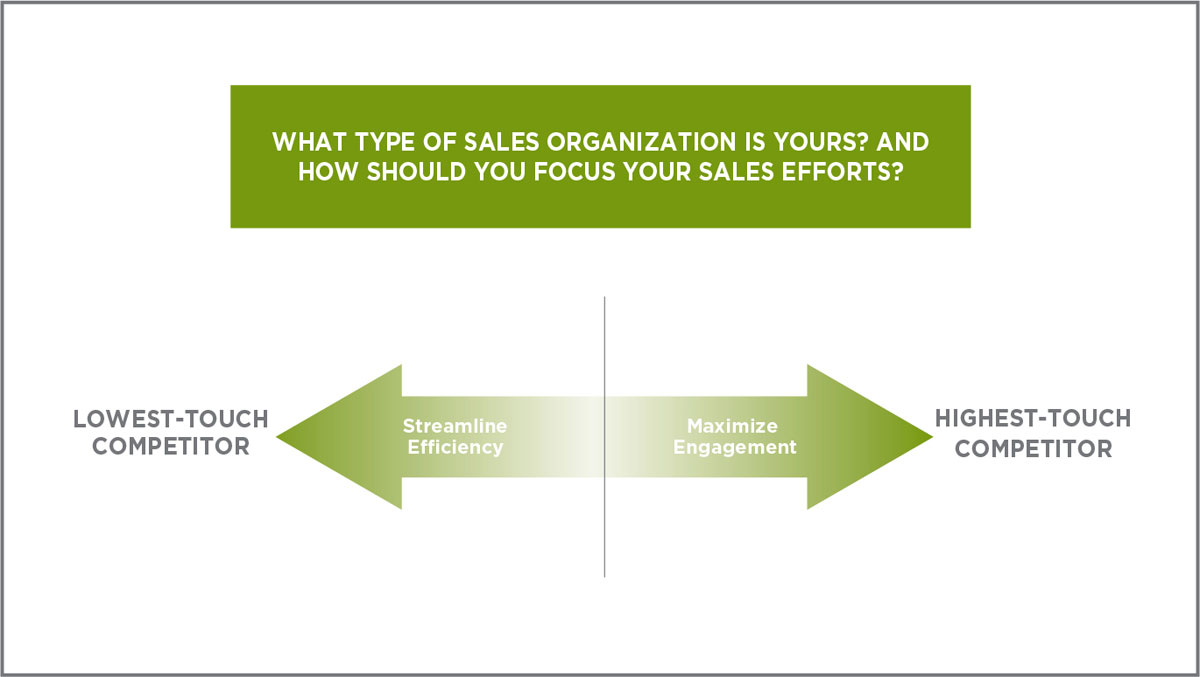The Evolving Role of Sales in the Modern Industrial Manufacturing Organization
By Matt Troy, Director, Strategy
If you’ve been in a sales position at an industrial manufacturer for any length of time, changes to your role have likely been the only constant throughout the years. The internet emerged and B2C e-commerce blew up. For a few years, B2B still operated the same as it always had. Faxes. Phone calls. Face-to-face meetings and trade shows. Then electronic catalogs started to pop up. Then, websites that played videos and had other sales collateral. Buying portals and EDI became standard operating procedures to make ordering easier. Before we knew it, smartphones and tablets had revolutionized the way salespeople worked. Then, the ‘big data’ that had become all the rage in the financial world started to make its way to the industrial sector. Organizations began to place higher importance on tracking just about everything. Opportunities. Sales pipeline dollars. Soft leads. Qualified leads. And likely twenty more that may or may not have made sense at the time. On top of that, organizations began asking their sales force to track all of this in Salesforce or some other CRM. Zoom Info reports that between 2008 and 2014, use of cloud-based CRM in B2B organizations jumped from 12% to 87%. This is a trend that we won’t see reversing any time soon.
All of this has forced many salespeople to ask themselves, ‘at a time where the customer searches for what they want on Google, a large percentage of orders are placed through some portal somewhere, and I spend what seems like half of my day entering information into a CRM or some other sales tracking program, what has my job become anyway?’ Here are five quick tips to help you understand how your role may have changed – and some advice on how to be a top performer now that it has.
- Accept the fact that the ‘digital way’ of doing things has hit industrial, B2B, manufacturing – and pretty much every other type of business out there. For years, some of us thought that maybe our business wouldn’t be as disrupted by digital as others. Accept the fact that that’s not true and embrace the digital wave. Any energy you spend fighting against it is wasted time and effort.
- Step back and assess how your industry’s sales process has changed over the years. Create a mental benchmark with two competitive sales organizations on each of the different ends of the spectrum. On the left end of the spectrum, put the competitor with the LEAST amount of sales interaction that goes into making a sale – think about an online seller who doesn’t have a lot of product expertise, or field salespeople. On the right end, map out the competitor whose sales force is able to spend the most time, or provide the most support throughout the process. Where would your organization be placed on this spectrum? If your organization falls left of center, and your sales force has become more of a low-touch organization, your focus should be on streamlining efficiency. More volume will drive your productivity. If your company falls right of the centerline and still wants to be a high-touch sales organization, use prospect engagement as a metric to help you determine which leads are worth your time to follow up with. The more willing the prospect is to engage you, the more likely they are to give you the time you will ultimately need to close the sale.

- Make sure you understand exactly how your organization is measuring effectiveness in the sales process. Directives from your sales leader might not make sense, and you might disagree with them, but it’s essential that you understand how you’re being evaluated. With the addition of new metrics and new ways of evaluating success, just hitting your numbers might not be good enough anymore. When a new VP of sales comes in, and all they care about is whether or not you have 50 new opportunities in the CRM every month, you may as well make sure you get 50 new opportunities in the CRM every month. While you may be incentivized to create more opportunity for your organization it’s worth considering how to measure the quality of those opportunities as well.
- Be smart about utilizing the resources the organization is deploying to try to help you optimize your opportunities. Whether that means partnering with marketing if they’re doing email campaigns to nurture prospects, or downloading an app on your phone that will help you input your information into the CRM more quickly, or utilizing inside sales support to do administrative work that eats up your time – if they’re offering, it means they have invested money at the corporate level, and they think it will help you. Take advantage of any resource you can!
- Remember, the rules and some of the metrics within the sales process may have changed, but the basics haven’t. If you were a great salesperson ten years ago, you still have every opportunity to be an even better one today. Above all else, the modern approach to sales is not that much different than it was five, ten, or twenty years ago. Identify your target. Engage them. And do anything and everything you can to move them through the sales funnel to get closer to making the sale. Sales is still sales.
In closing, as sales processes and organizational approaches to sales metrics change, understand your company’s rules, know how you’ll be evaluated and paid, utilize as many modern tools as you can, and then go out and dominate.




